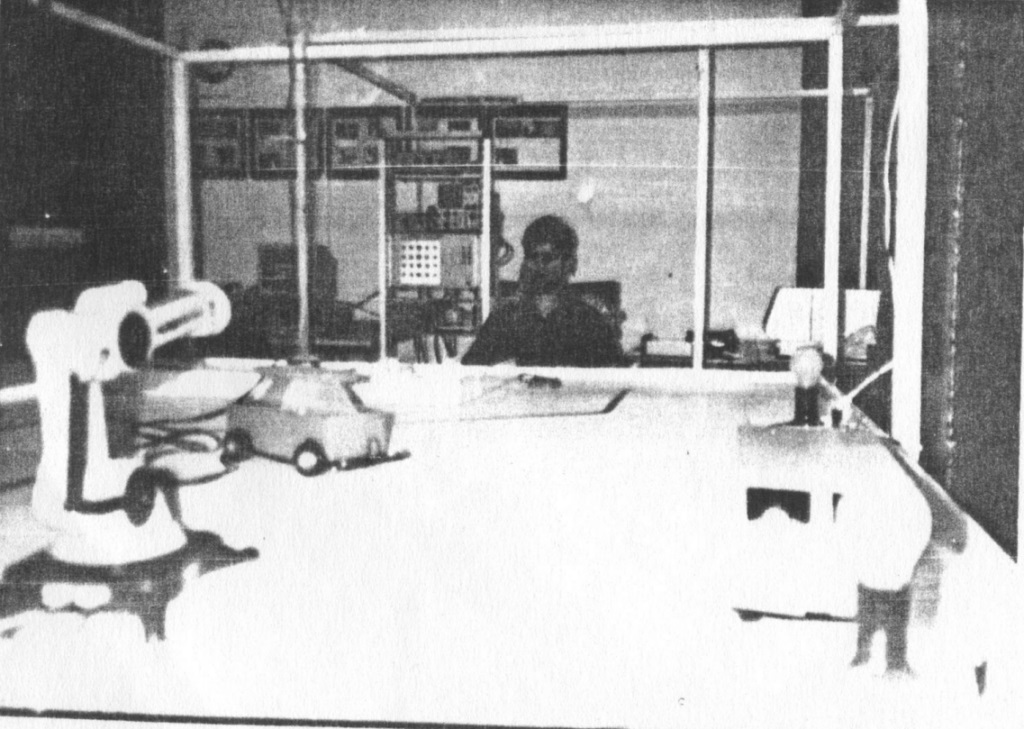The first control of a robot using signals from the brain, 1988, took place in Macedonia

IEEE – Institute of Electrical and Electrotechnical Engineers organizes a plaque unveiling ceremony for a significant work of Macedonian science.
IEEE (Institute of Electrical and Electronics Engineers) is the world’s largest professional organization in the field of engineering, computer science and related disciplines.
This type of memorial is established by the IEEE for scientific achievements that the IEEE recognizes as a turning point in world science, a moment of great and important achievement (IEEE Milestone).
The work in question is “First control of a robot using signals from the brain, 1988” and was realized by the team Stevo Bozinovski, Faculty of Electrical Engineering, Mihail Shestakov, postgraduate student at the Faculty of Electrical Engineering, Liliana Bozinovska, Faculty of Medicine. More information about the achievement and the event can be found at: https://r8.ieee.org/northmacedonia/2023-milestone/
The ceremony will be held on October 10, 2023, in the premises of the Faculty of Electrical Engineering and Information Technologies (FEIT).
How big is this discovery?
Through the Faculty of Electrical Engineering at the time, Macedonia became the first country in the world in 1988, where a robot was controlled using human brain signals. The size and importance of this discovery is also indicated by the fact that a similar result was obtained for the second time in the world, 11 years later, in 1999 in the USA.
– The plaque will read: First Robot Control by Human Brain Signals, 1988 – “In 1988, at the Laboratory for Intelligent Machines and Bioinformation Systems, human brain signals controlled the movement of a physical object (robot) for the first time in the world. This connected electroencephalogram (EEG), signals collected from the brain by robotics research, opened a new channel of communication between humans and machines. EEG-controlled devices (wheelchairs, exoskeletons, etc.) have benefited numerous users and expanded the role of technology in modern society.”
The credit for this recognition goes to three scientists, whose names will forever be noted in Macedonian and world science. It is about Stevo Bozinovski and Mihail Shestakov from the Faculty of Electrical Engineering, together with Liliana Bozinovska from the Institute of Physiology from the Faculty of Medicine in Skopje, who managed to control a mobile robot through human brain signals. With that, for the first time in the world, they created a connection between two different scientific disciplines – robotics and neurophysiology.
This discovery lays the foundation for direct brain-robot communication. The benefits to humanity can be seen in the new research path as well as in the new applications for humanity. There are demonstrated applications in paraplegic subjects controlling physical objects. There are applications in the entertainment industry with various drones controlled by brain signals. It has also been used in educational labs, showing how students can control objects using their own EEG signals.
The scientific report was published in the proceedings of the 1988 IEEE Engineering in Medicine and Biology Society Conference in New Orleans.
The demonstration experiment showed the robot moving along a closed line drawn on the floor surface, controlled by go/stop commands translated from evoked EEG alpha-rhythm changes in the human brain. The robot was purchased in Tokyo, Japan, in 1984, while the achievement was made at the Laboratory for Intelligent Machines and Bioinformation Systems at the Faculty of Electrical Engineering in Skopje.
– The achievement was significantly ahead of its time: The second control of a robot using brain signals was achieved 11 years later, in 1999, when a team led by Nicolelis of Duke University used a rat brain to control a robot arm, the release said. the awarding of recognition to Macedonian scientists.
The memorial plaque in honor of the significant scientific achievement will be mounted on the wall of the hall at the entrance of the Annex building of the Faculty of Electrical Engineering and Information Technologies (FEIT) in Skopje.
Recommended Posts

Lead generation in the AI era
May 16, 2023

AI Personalization Tools: Do they give you chills or benefits?
December 19, 2022



